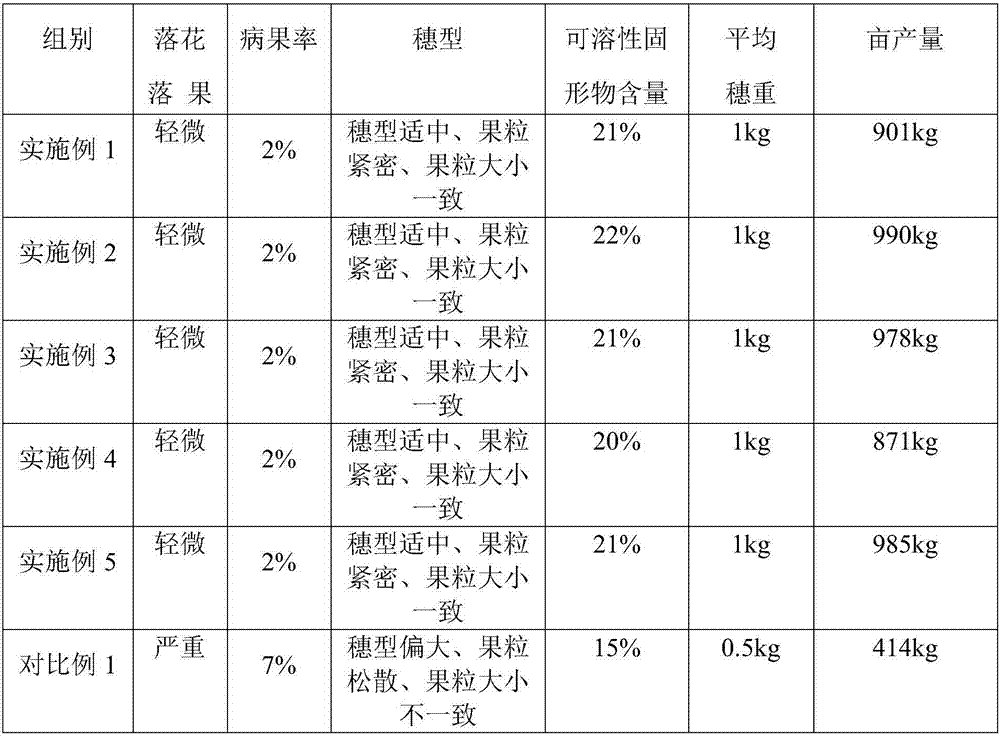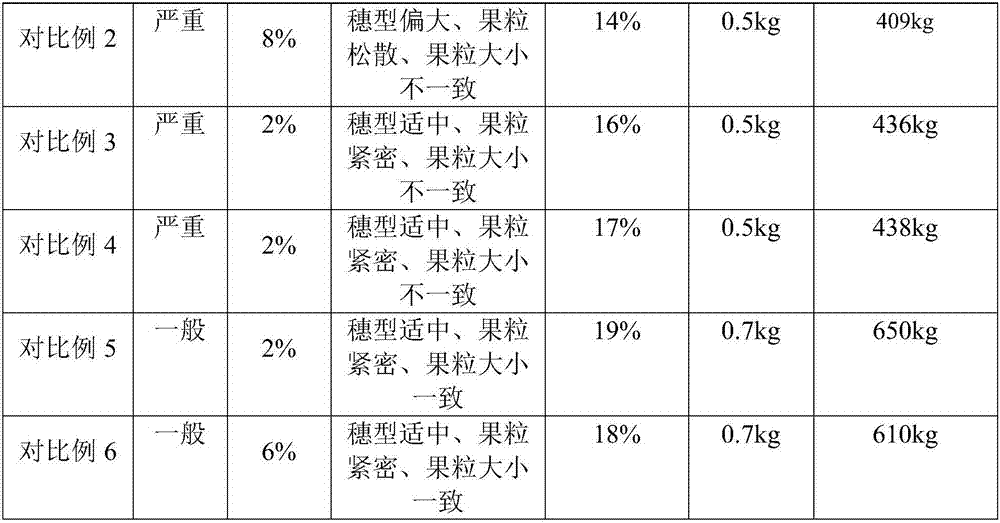Kyoho grape cluster treatment method
A processing method and technology for Kyoho grapes, applied in the field of viticulture, can solve the problems of high labor cost, unresolved ear looseness, increased disease occurrence probability, etc., and achieve the effects of increasing yield per mu, wide market application prospects, and reducing labor costs for processing.
- Summary
- Abstract
- Description
- Claims
- Application Information
AI Technical Summary
Problems solved by technology
Method used
Image
Examples
Embodiment 1
[0021] A method for processing Kyoho grape ears, comprising:
[0022] Step 1: Carry out pretreatment to the grape ear, keep only one ear of grapes for each fruiting branch of the grape, and the distance between the fruiting branches is 25cm;
[0023] Step 2: 3-7 days before the flowering of the grapes, use a concentration of 20ppm fluclobutrazol and paclobutrazol in a mixture of 0.5:1 to treat the ears;
[0024] Step 3: during the flowering stage of the grapes, use a mixed solution with a concentration of 50ppm gibberellic acid and 8ppm forchlorfenuron to treat the ears;
[0025] Step 4: when the young grape fruit is expanding, use a mixed solution with a concentration of 50ppm gibberellic acid and 8ppm forchlorfenuron to treat the ears.
Embodiment 2
[0027] A method for processing Kyoho grape ears, comprising:
[0028] Step 1: Carry out pretreatment to the grape ears, and only keep one ear of grapes for each fruiting branch of the grapes, and the distance between the fruiting branches is 22cm;
[0029] Step 2: 3-7 days before grape flowering, use a concentration of 100ppm of triadimefon, epoxazole, paclobutrazol, and uniconazole to treat the ears in a 1:1:1:1 mixture;
[0030] Step 3: during the flowering stage of the grapes, use a mixed solution with a concentration of 50ppm gibberellic acid and 8ppm forchlorfenuron to treat the ears;
[0031] Step 4: when the young grape fruit is expanding, use a mixed solution with a concentration of 50ppm gibberellic acid and 8ppm forchlorfenuron to treat the ears.
Embodiment 3
[0033] A method for processing Kyoho grape ears, comprising:
[0034] Step 1: Carry out pretreatment to the grape ear, keep only one ear of grapes for each fruiting branch of the grape, and the distance between the fruiting branches is 20cm;
[0035] Step 2: 3-7 days before grape flowering, use prothioconazole, paclobutrazol and uniconazole at a concentration of 500ppm to treat the ears in a mixture of 0.8:1:1;
[0036] Step 3: during the flowering stage of the grapes, use a mixed solution with a concentration of 50ppm gibberellic acid and 8ppm forchlorfenuron to treat the ears;
[0037] Step 4: when the young grape fruit is expanding, use a mixed solution with a concentration of 50ppm gibberellic acid and 8ppm forchlorfenuron to treat the ears.
PUM
 Login to View More
Login to View More Abstract
Description
Claims
Application Information
 Login to View More
Login to View More - R&D
- Intellectual Property
- Life Sciences
- Materials
- Tech Scout
- Unparalleled Data Quality
- Higher Quality Content
- 60% Fewer Hallucinations
Browse by: Latest US Patents, China's latest patents, Technical Efficacy Thesaurus, Application Domain, Technology Topic, Popular Technical Reports.
© 2025 PatSnap. All rights reserved.Legal|Privacy policy|Modern Slavery Act Transparency Statement|Sitemap|About US| Contact US: help@patsnap.com


